INVISIBLE WORLD
Tyler Enfield and Galen Scorer
2017
| 22 min
Selections and Awards
Download the app
The NFB’s Invisible World: A New Kind of Interactive Video Story
In a cinematic breath of fresh air, Invisible World sweeps past many traditional boundaries. While exploring themes such as the dissolving borders between East and West, past and present, life and death, this interactive video also pushes the usual formal boundaries of visual storytelling.
First off, the story—re-imagined today but based on memory and historical fact—challenges the drawing of a clear line between documentary and fiction. Secondly, it breaks down the wall between filmmaker and audience by offering its story in interactive format, transforming the viewer into an end-user who can choose among several perspectives or versions of the story. To create this interactivity, the filmmakers have had to relinquish control of the story’s unveiling, handing much of that power over to the audience-become-user. Thirdly, Invisible World moves beyond the usual stop-and-start interactive experience, creating a new and fluid form of interactivity. The video presents three screen-layers or panes on top of—or beside—one another that can each be expanded, contracted, hidden or revealed as the user moves a cursor. This manipulation is accompanied by the continuous unfolding of voiceover and story, allowing Invisible World to offer choice even as it retains the rhythm, build and emotional power of traditional cinema.
This layered structure also pushes other limits: while the shots that fill the screens draw from cinematic tradition, with conventional main, POV and reaction shots and black-and-white memory scenes, all these can be seen in one glance rather than sequentially. The interactive design in turn empowers the viewer-user to choose which of these scenes to watch or place side-by-side, creating visuals that contextualize the story in a different way with each viewing.
Finally, after getting to know each character up to a key turning point, the end-user can choose among three different voiceovers—and character perspectives—to accompany their viewing of the crucial final moments of the story. This continues the piece’s offering of many choices and perspectives inside a single storyline. A major accomplishment of Invisible World, then, is that while each user instantly edits and has their own experience of the events, the story is always clear, accessible, and engaging.
In summary: by breaking through so many boundaries, Invisible World combines the virtues of traditional narrative film and interactive video, breathing new life into old forms.
Short Synopsis
The year is 1994. The Cambodian civil war is still alive in the provinces. Phnom Penh is finally free of the Khmer Rouge, but is now a Wild West city with little infrastructure. Poverty, drugs and crime are rampant. Tourism is limited to adventurers and an unruly breed of Western expatriates who take advantage of this foreign country without connecting to its environment and the people who live in it.
Invisible World is a 22-minute interactive project that pushes the cinematic form on several levels, exploring the dissolving borders between East and West, past and present, life and death. Through the reimagined story of real events that occurred in Cambodia in the mid-1990s, it also blurs the line between documentary and fiction by drawing on the memories and perspectives of three characters whose fates suddenly intertwine during a shared traumatic event: the drowning and miraculous return of a young boy.
Breaking down the wall between filmmaker and audience, Invisible World hands most of the visual storytelling over to the user, who can choose from among several perspectives or versions of the story to watch. Using gripping visuals and a rich soundscape to examine how memory, perspective and experience alter our understanding of the past—and how our interactions change our experience of reality—it invites us to peel back the many layers of our own invisible worlds.
The year is 1994. The Cambodian civil war is still alive in the provinces. Phnom Penh is finally free of the Khmer Rouge, but is now a Wild West city with little infrastructure. Poverty, drugs and crime are rampant. Tourism is limited to adventurers and an unruly breed of Western expatriates who obliviously take advantage of this foreign country without connecting to its environment and the people who live in it.
Invisible World is a 22-minute interactive film that pushes the cinematic form on several levels, exploring the dissolving borders between East and West, past and present, life and death. Through the reimagined story of real events that occurred in Cambodia in the mid-1990s, it also blurs the line between documentary and fiction by drawing on the memories and perspectives of three different characters whose fates suddenly intertwine during a shared traumatic event: the drowning of a young boy.
The build-up to this dramatic scene is divided into three short chapters, in which we visually follow each character’s perspective of that particular day. We first encounter Jeff, a young, self-absorbed Westerner working in Phnom Penh as an English teacher. His life is charmed yet he remains naïve—until he witnesses the drowning and gets his first glimpse of the profound. His self-absorption stands in stark contrast to the thoughtful nature of Dr. Von, an intelligent and insightful man who sees both sides of the coin. Though he understands the benefits of Western influence, he resents the presence of belligerent expatriates like Jeff in his country. It is Dr. Von who races to the boy’s rescue; meanwhile, the boy’s mother, Channa, is too paralyzed with fear to react. But even in the immediacy of her grief, she is able to relate to something deeper within and express a wisdom that is both ancestral and feminine.
Co-creators Tyler Enfield and Galen Scorer break down the wall between filmmaker and audience by transforming the viewer into an end-user who can choose from among several perspectives or versions of the story to watch. As each chapter unfolds, the screen is split into overlapping layers that the user can expand, contract, hide or reveal in real time by simply moving a cursor. Each layer adds new depth and detail to the story, questioning the idea of perspective and what we choose to see—or choose to hide. Will the user follow the documentary footage that’s closest to the narration, or focus on the close-up still photograph of a subject? Perhaps the user will be drawn to the stop-motion photography of a distant place or time, or simply watch the images side by side. Unlike with most stop-and-start interactive experiences, these choices do not break the flow of narration. Instead, they result in a fluid, uninterrupted experience that’s enhanced by a rich soundscape. Each experience of Invisible World is largely created by the end-user, and no two viewings are alike.
Each chapter closes with the same dramatic scene, in which the three characters finally intersect. As the boy’s drowning and miraculous return unfold through still photographs and cinemagraphs, the characters continue to narrate their own perspectives of the scene. Each view includes all that comes before it, to which the user adds their own unique understanding. In this way, the user experiences a progression, as seen through the lives of all three characters, toward self-realization.
By handing most of the visual storytelling over to the user, Invisible World allows the viewer to examine how memory, perspective and experience alter our understanding of the past—and how our interactions change our experience of reality. Through its visual and auditory exploration of self-discovery, it invites us to peel back the many layers of our own invisible worlds.
Invisible World was co-created by photographer and writer Tyler Enfield and interactive consultant and artist Galen Score, with producer Bonnie Thompson through the National Film Board of Canada’s North West Centre. The project includes the writing of Madeleine Thien (Man Booker Prize nominee, Scotiabank Giller Prize and Governor General Award winner) and the eloquent performance of Cambodian American actor Francois Chau (Lost, The Expanse).
The full interactive experience is available online or via app at nfb.ca/invisibleworld.
One-liner description
A 22-minute interactive project that blurs the line between documentary and fiction, Invisible World reimagines a young boy’s drowning and miraculous return in Cambodia in the mid-1990s through the perspectives and memories of multiple characters.
Teaser
Team
Galen Scorer
Interactive Director | Co-Creator | Cinematographer | Editor
Photo
Tyler Enfield
Writer | Co-creator | Cinematographer | Director
Photo
Bonnie Thompson
Producer (NFB)
Photo
Photo : Debbie Boccabella
Images
Loading...
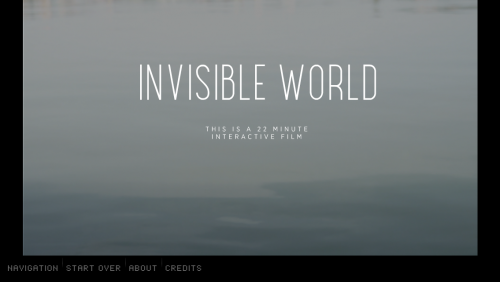
Download
Loading...
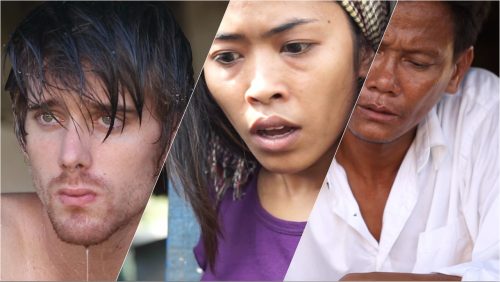
Download
Loading...
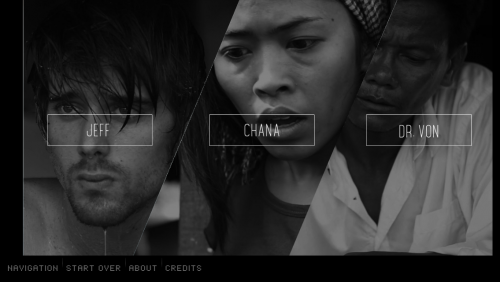
Download
Loading...
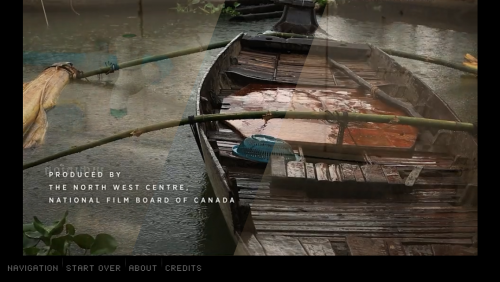
Download
Loading...
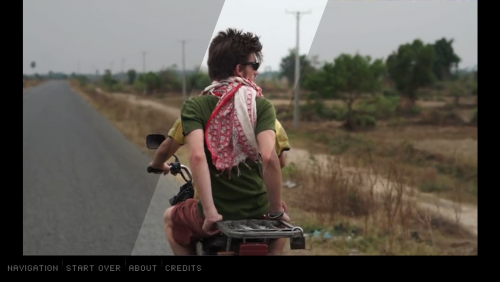
Download
Loading...

Download
Loading...
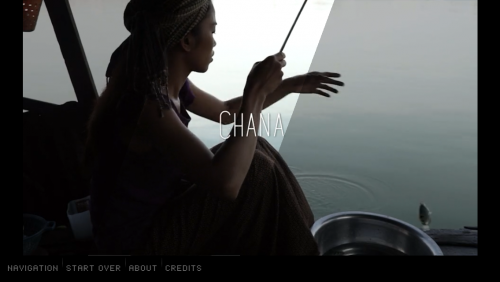
Download
Loading...

Download
Loading...
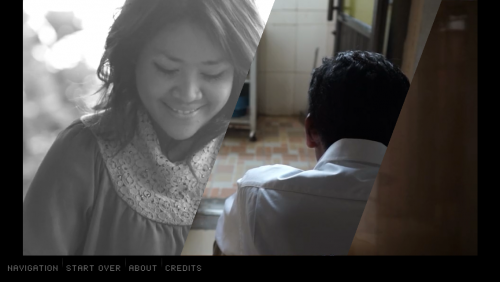
Download
Loading...
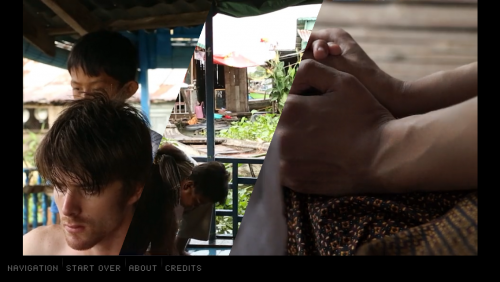
Download
Loading...
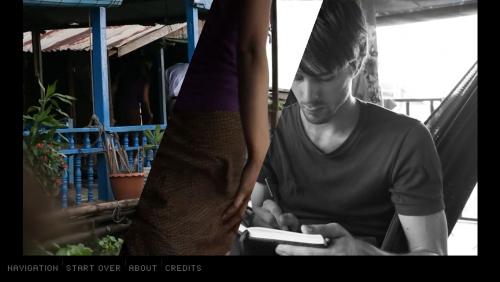
Download
Credits
Co-created by
Tyler Enfield and Galen Scorer
Produced by
Bonnie Thompson
Executive Producer
David Christensen
Interactive Director
Galen Scorer
Story Director
Tyler Enfield
Editor
Galen Scorer
Directors of Photography
Tyler Enfield
Galen Scorer
Associate Producer
Nicolaus Mesterharm
Production Manager/Assistant Director
Sopheak Sao
Scripts Written by
Tyler Enfield – Jeff’s story
Amara Chaya – Chana’s and Dr. Von’s stories
Narration Written by
Tyler Enfield – Jeff
Madeleine Thien – Chana and Dr. Von
Actors
Mark Tilly – Jeff
Sereyvuth Kem – Dr. Von
Chak Rya Ngem – Chana
Sothany Im – Sailah
Jan Mueller – Ben
Justin Landis – Marco
Sina Brod – Christa
Seang Hay Sean – Policeman
Voun Chea – patient
Naron Nob – Young Dr. Von
Lakhna Krip – Dr. Von’s young wife
Young Ven Ving – Chroy Changva Grandmother
Phan Peng – Grandmother
Sry Neang Rin – Young Chana
Vanny Vath – Arun
Chenda Van – extra
Han Sok – Chroy Changva mother
Hav Sok – Chroy Changva little girl
Gna Sok – Chroy Changva girl
Bav Sok – Chroy Changva boy
Savy Vorn – woman with crutches on street
Seang Horn Say – market stall owner
English Narration Actors
Dylan Howard – Jeff
Francois Chau – Dr. Von
Madeleine Thien – Chana
Khmer Narration Actors
Sereyvuth Kem – Dr. Von
Chak Rya Ngem – Chana
Kai Jest Miller – Jeff
Casting/Casting Manager
Sithorn Hout
Production Assistants
Nareth Ung
Maty Prom
Chenda Vam
Location Sound Recordists
Jan Mueller
Sony Yen
Driver
Samnang Prak
Technical and Digital Design
gskinner
Lead Developer
Alex Garneau
Development Manager
Lanny McNie
CEO & Chief Architect
Grant Skinner
Creative Director
Chris Caldwell
RED The Agency
Senior Developer
Aaron Clifford
Creative Director
Dennis Lenarduzzi
Account Director
Angus Gastle
Technical Director
Marek Pietraszko
Interactive Designer
David Nguyen
Account Manager
Bilal El Houri
Assistant Editor
Oliver Lessard
Original Music
Everett La Roi
Audio Post Production Facilities
Johnny Blerot Sound Inc.
Sound Editor and Mixing Engineer
Johnny Blerot
Additional voice recording
Los Angeles
Post Haste Sound
Vancouver
Postal Audio Inc.
Phnom Penh
Jan Meuller Sound
Khmer/English Translations
Sokvisal Kimsroy
Additional translations
Sophan Seng
Development and Design Digital Platform – NFB
Vince McCurley
Digital co-ordinator – NFB
Nicholas Klassen
Production Coordinators
Ginette D’Silva
Faye Yoneda
Production Supervisor
Mark Power
Marketing Manager
Tammy Peddle
Centre Adminstrator
Bree Beach
Centre Operations Manager
Darin Clausen
Produced by the National Film Board of Canada

Media Relations
-
About the NFB
The National Film Board of Canada (NFB) is one of the world’s leading digital content hubs, creating groundbreaking interactive documentaries and animation, mobile content, installations and participatory experiences. NFB interactive productions and digital platforms have won over 100 awards, including 21 Webbys. To access this unique content, visit NFB.ca.